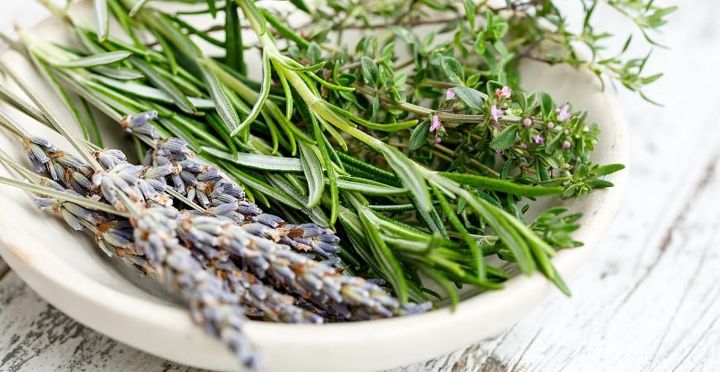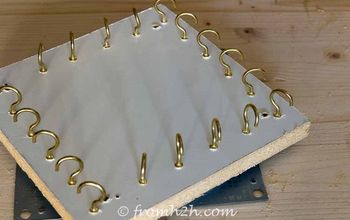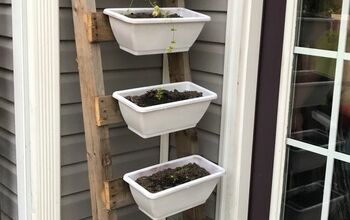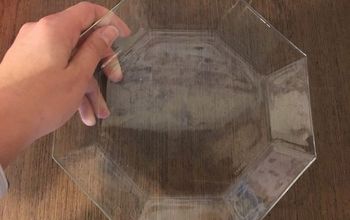Harvesting Herbs: How-tos for Home Gardeners

by
Wet & Forget
(IC: professional)
3 Materials
$5
20 Minutes
Easy
Harvesting herbs is a home gardener’s joy. It’s a much-anticipated occasion – a time when weeks of planting, weeding, and watering produce healthy, fragrant herbs to delight the senses and the dinner table. Read on for hints and tips on harvesting and storing the fruits (and veggies) of your labor.
Harvesting Garden Herbs
What You’ll Need:
- Garden gloves
- All-purpose garden scissors
- A basket or container to hold cut herbs
Instructions:
- First, make sure your herbs have been well watered before you harvest.
- A few hours after watering, gather your supplies and start snipping. Place the cuttings in a container.
- Cut and keep sections that are in good condition– discard damaged or wilted greenery.
- Gently rinse snipped herbs under cool, running water. Careful – they are tender.
The best time of day for harvesting herbs is in the early morning, immediately after the dew has evaporated.
Additional harvesting herbs how-tos:
Perennial herbs such as thyme, oregano, and sage should be snipped at one-third of the plant’s height. Perennial herbs can be snipped anytime during the growing season.
Annual herbs are known for their tasty leaves. Basil, Italian parsley, and cilantro should regularly be cut throughout the growing season. Regular cuts help keep the plant’s energy focused on new growth. Routine clipping keeps them from going to seed.
Edible flowers such as lavender, borage, and dill should be clipped soon after the flowers bloom. Cutting immediately after flowering will ensure that your harvest will be at peak flavor. Remember: The flowers are delicate – handle carefully.
Herb seeds such as dill and coriander require accurate timing. Check the plants daily, taking note of when the seeds ripen and turn brown. Then, harvest the seeds immediately. Otherwise, you risk losing them to a gust of wind or a hungry critter. Harvesting herbs can be simple and easy!
Air Drying Herbs for Cooking
- Lay the cuttings on an absorbent kitchen towel.
- Spread the cuttings in a single layer.
- Allow the herbs to air-dry at room temperature for approximately seven days.
- Turn the herbs daily during the drying process so that the clippings will be exposed to even air flow.
- When the leaves become dry and brittle – breaking easily between your fingers – they are ready for storage or to be included in recipes.
Dry stems by gathering several together and tying them into a bundle with kitchen twine. Place the tied bundle in a brown paper bag, with the stem ends poking out of the open end. Hang the paper bag in a dark, warm location. The herb stems will dry within two to four weeks. The time will vary depending on room temperature and humidity.
Storing Herbs
Store dried herbs in an air-tight kitchen container. Place the container in a cool, dry place – away from light and heat, since both will degrade the flavor and quality. A kitchen cabinet or pantry works well. For more information on harvesting, drying, and storing herbs, click here.
Preserving Herbs – Making Herb Vinegar
Herb vinegar tastes great drizzled on a salad or as an ingredient in salad dressing. It’s simple to make. Plus it makes a great gift. Here’s how:
- Place clean herb cuttings in a jar or decorative bottle.
- Pour white vinegar over the herbs to cover. If you like a strong flavor, heat the vinegar in a saucepan to simmering and pour over.
- Place the lid on the container and store the herb/vinegar blend in a cool, dry place.
Let sit for four to six weeks to allow the flavors to blend.
A List of Commonly Planted Herbs – Gathering and Cooking
Anise
Tender, green anise leaves can be snipped at any time during the growing season. The seeds are ready for harvest when they turn brown. Anise leaves can be added to soups, salads, and meat dishes. The seeds are often used in dessert recipes – cakes and cookies, etc.
Sweet Basil
Pick sweet basil leaves when they mature – in about six weeks after planting. If you’re planning to dry the leaves, be sure to pick the leaves just before the herb blooms. Sweet basil makes a great addition to stews, soups, and salads.
Caraway
Gather caraway seeds when they look grayish brown. Prepare the seeds by scalding them in boiling water. Let them dry thoroughly on a clean towel. Caraway seeds are a delicious addition to coleslaw, sauerkraut, stew, and fish dishes. Also in baked goods – bread, cookies, and cakes. Toast caraway seeds by placing them in a skillet over medium-high heat. Toast for 2 to 3 minutes or until fragrant.
Chives
Pick fresh chive stems as needed throughout the growing season. Trim the tender stems just above the ground. Onion-like in flavor, chives add flavor to soups, salads, breakfast dishes, dips, and casseroles.
Dill
Snip dill leaves when mature. Gather dill seed heads when the seeds turn light brown. Both the leaves and seeds are one of the main ingredients in dill pickles. Dill leaves add flavor to soups, fish dishes, omelets, and cooked vegetables. The seeds are often an ingredient in sauerkraut, sauces, and pastries.
Lavender
Snip lavender spikes right before the florets bloom. This is when the fragrance and color are at their peak. Lavender is often used to scent potpourri, sachets, and in flower waters.
Mint
Snip mint leaves just before the plant flowers to take advantage of peak flavor. Trim stems at the bottom – close to the soil. Mint can be used in iced tea and to make mint jelly. The bright flavor of mint pairs well in lamb dishes.
Rosemary
Clip tender, young rosemary stems when mature – trimming just one-third of the stem. If you’re planning on drying rosemary, harvest it just before the flowers open. Rosemary adds a pop of flavor to beef, poultry, and potato dishes.
Harvesting herbs couldn’t be easier when following the steps above. Now you can savor your herbs or add them to a delicious summer dish without the hassle of running to the grocery store.
For more summer gardening tips, visit here.
Enjoyed the project?
Resources for this project:
Any price and availability information displayed on [relevant Amazon Site(s), as applicable] at the time of purchase will apply to the purchase of this product.
Hometalk may collect a small share of sales from the links on this page.More info
Published June 9th, 2018 10:00 AM

































Frequently asked questions
Have a question about this project?
Really enjoyed this article, it gave me some nice ideas. I've grown and harvested Rosemary for many years now and used lots of different methods to dry my herbs before storing them. Including air drying, microwave drying, oven drying.
I've even seen an article on on how to dry herbs in a food dehydrator which may be worth trying.
https://theyardandgarden.com/how-to-dry-rosemary/
Would you recommend any of these methods for herbs other than Rosemary, as some of them are more delicate leaves when compared to drying Rosemary?